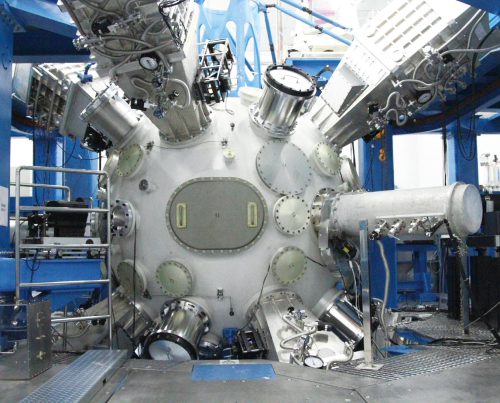Superintense-ultrafast laser is considered to be the brightest light source known to mankind. It allows us to create unprecedented extreme electromagnetic fields, as well as combined physical conditions featured with ultra-high energy density and ultra-fast time scales in the laboratory. It can be used in other fields like ultrafast chemistry, materials science, laser fusion, nuclear physics and nuclear medicine, and high-energy physics.

Left: China made a breakthrough in SULF (Superintense-Ultrafast Laser Facility) development. (Credit: YiCai Global); Right: The Shenguang I device. (Credit: SIOM)
In 2002, scientists at the CAS Shanghai Institute of Optics and Fine Mechanics (SIOM) made a groundbreaking advance in the field of minimized Superintense ultra-short laser based on the Optical Parametric Chirped Pulse Amplification (OPCPA). The produced superintense laser reached a peak output power of 16.7 terawatts (1 terawatt equals 1012 watts), setting a new world’s record and winning the first prize of the National Science and Technology Progress Award in 2004.
Later in 2011, scientists at the CAS Institute of Physics obtained superintense laser with a peak output power greater than 1 petawatt, or 1000 terawatts. In 2013 and 2016, SIOM scientists successively developed laser systems that can output 2 petawatts and 5 petawatts superintense laser, setting the world’s highest laser peak power record back then. In 2017, SIOM scientists once again achieved a 10 petawatts laser output, marking China’s leading level in the field of superintense laser.

The target room of the Shenguang II upgraded driver device. (Credit: CAS)
Scientists at SIOM also established the Shenguang devices, providing key strategic support for high-energy density physics frontier research and national strategic high-tech development. The Shenguang I device completed in 1986 marked a major breakthrough in the ICF quintet experimental research in China and won the first prize of the National Science and Technology Progress Award in 1990. SIOM scientists also developed the Shenguang II laser device in 2001, and the China’s only domestic multi-function probe system in 2005. Passing the inspection in 2017, the Shenguang II upgraded laser device has become an integrated research platform for China’s ICF research.

